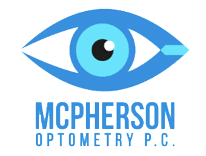What Are the Signs of Glaucoma? Am I at Risk?
Glaucoma is a serious eye disease that can cause permanent eye damage and vision loss. Knowing the signs of glaucoma and who is at risk can help you protect yourself.
Seeing your eye doctor in North Syracuse, NY, regularly can help you catch glaucoma in its early stages so you can get treatment when you need it. At McPherson Optometry P.C., we provide eye disease treatment to patients, helping them manage eye conditions like glaucoma.
What Is Glaucoma?
Glaucoma is a condition that causes damage to the optic nerve. This usually happens when there’s too much pressure in the eye. The effects of glaucoma can’t be reversed, but if glaucoma is caught early enough, it’s possible to slow the progress of the disease.
Who Is At Risk for Glaucoma?
Glaucoma can affect anyone, from the youngest babies to the oldest adults. However, there are many factors that can put you at a higher risk for glaucoma. Some risk factors include:
- Older age. People over 60 are at higher risk of glaucoma.
- Genetics. People who have a history of glaucoma in their family are at higher risk of glaucoma themselves.
- Eye injuries. Some eye injuries can put people at a higher risk for glaucoma. If you’ve had an eye injury in the past, talk to your eye doctor.
- Various medical conditions. Diabetes, high and low blood pressure, and myopia are all conditions that can put you at higher risk of glaucoma.
What Are the Symptoms of Glaucoma?
Some types of glaucoma have no symptoms in their early stages, which means that people who get glaucoma often don’t realize it until they’ve started to lose their eyesight. Once a person loses eyesight due to glaucoma, it can’t be reversed.
Other symptoms of glaucoma include:
- Blurry vision or tunnel vision
- Headaches
- Eye pressure, eye pain, eye discomfort
- Red eyes
- Vomiting
- Rainbow halos around lights



